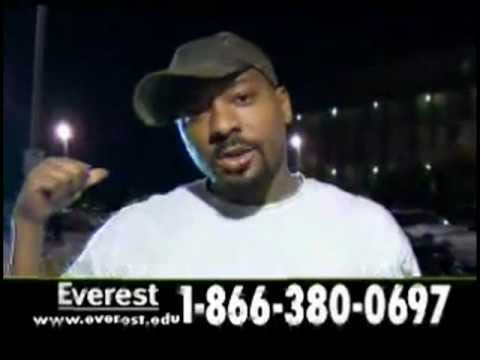#001: So You Want to Launch A Product?
Learn fluff-free tactics to launch your product and consistently win paying customers.
You’re sitting on the couch watching TV and life is passing you by.
You have entrepreneurial dreams and ideas but you don’t know where to start.
You keep procrastinating over and over, saying well maybe I’ll work on it next year.
No, do it right now!
Ok, now that I have your attention.
Let’s talk about that idea you have—and how to overcome analysis paralysis and FINALLY do something about it.
If you're a first-time founder bootstrapping your early stage SaaS startup, or a founder from an underserved community looking to maximize the limited resources you have, this approach is for you.
Let’s dive in.
1. Know Your Audience (Market Research)
Start small. Focus on one segment at a time using a beachhead strategy, where you aim to win over a specific audience segment before expanding to another. It’s a military tactic for those wondering.
Top three things to do:
Conduct Customer Interviews: Speak directly with potential customers to understand their pain points and needs. Ask specific questions about their current challenges and what solutions they’re seeking
Analyze Competitors: Identify your top three competitors and analyze their strengths, weaknesses, and customer feedback. Look for gaps in their offerings that you can fill
Create a Customer Persona: Create a detailed profile of your early customer, covering their demographics, psychographics, firmographics, pain points, and buying habits. Use this persona to steer your marketing strategy
Remember, the beachhead strategy is key to avoiding wasted time and effort on random acts of marketing. By concentrating your resources on the right targets, you'll quickly establish a strong market presence and build momentum for sustained growth.
Challenge:
Identify one market segment where you can win. List out the common problems they face that your solution solves.
2. Find Customers Willing to Pay (Pricing)
It’s one thing for customers to say they love your product—but will they pay for it? Stop guessing and start using proven methods to find out what people are actually willing to spend on your product.
Top three things to do:
Test Pricing Models: Offer your product at different price points to a small group of users to see which price generates the most interest and conversions
Run a Pre-Sales Campaign: Before fully launching, offer a pre-sale or waiting list to gauge interest and commitment. This also helps generate early revenue and validate demand
Offer Tiered Pricing: Create different pricing tiers to appeal to a broader range of customers, from basic users to premium ones. This allows you to capture more value from different customer segments
Understanding pricing strategies ensures you capture the value you create and sets you up for sustainable growth.
Challenge:
Talk to 5 potential customers today. Ask them what problem they’d pay to solve and how much they’d pay.
3. Make Your Product Stand Out (Positioning & Messaging)
Your product needs to solve a specific problem, and your customers need to know exactly how it helps them. Strong positioning is the difference between a product that just exists and one that gets bought.
Top three things to do:
Craft a Clear Value Proposition: Write a single sentence that clearly states the main benefit your product provides to your target customer. Ensure it’s simple and easy to understand
Develop a Unique Selling Point (USP): Identify what makes your product different from competitors and highlight this in all your marketing materials
Create a Messaging Framework: Outline key messages that align with your value proposition and USP, ensuring consistency across all channels, including your website, ads, and sales pitch
Challenge:
Write down your product’s value proposition in one clear sentence that shows how it helps your target customers solve their problem.
4. Focus on ONE Channel (Customer Acquisition)
Understand where your customers hang out and how they discover new products. Pick one channel to focus on, and master it to build a sustainable acquisition engine.
Top three things to do:
Focus on One Channel: Select a single acquisition channel (e.g., content marketing, social media, or paid ads) and focus your efforts on mastering it. This avoids spreading yourself too thin
Set Measurable Goals: Define clear, measurable goals for this channel, such as the number of leads or conversions you want to achieve within a specific timeframe
Test and Optimize: Continuously test different strategies within your chosen channel, such as varying content formats or targeting criteria, and optimize based on performance data
Challenge:
Choose one acquisition channel (e.g., SEO, content marketing, or paid ads) and commit to testing it for the next 30 days.
5. Get Faster Feedback (Product Development)
Time is limited, especially for startups. Rapid testing and feedback loops help you avoid wasting months on features nobody wants. The faster you iterate, the faster you can reach product-market fit.
Top three things to do:
Collect Feedback Regularly: Use quick surveys or in-app prompts to gather user input
Test Small Changes: Experiment with minor updates and A/B tests to see what works
Analyze User Behavior: Check analytics often to spot trends and adjust quickly
Challenge:
Build a simple feedback loop with your first 10 customers. Send a survey asking how they’re using your product and what they wish it did better.
Key Takeaway
Don’t let your idea sit on the sidelines.
It’s time to put your plan into motion.
Success comes to those who act, not those who overthink.
Connect your dots and and see where it takes you.
How can I help?
First, connect with me on Linkedin (if you haven’t already).
Second, whenever you’re ready, here’s how I can help:
Audit your existing GTM plan
1:1 consultation on your startup GTM challenge
Serve as a guest writer for your newsletter
Passionately explain why LeBron > MJ




